
About Old Madeira Bottles
THE MADEIRA BOTTLE
Madeira bottles tend to come in many shapes and sizes. The modern bottles are often not as heavy anymore as they were like until the 1960ies, and in my opinion the color of the glass also has gone to the brighter side. There are two main shapes of bottles: Burgundy-shaped bottles and Bordeaux-type bottles, the latter often with a little bulge in the bottle neck. There are also many other shapes or variations of the two main shapes, especially when it comes to hand blown bottles. Before 1900 the bottles were sometimes stronger in thickness.
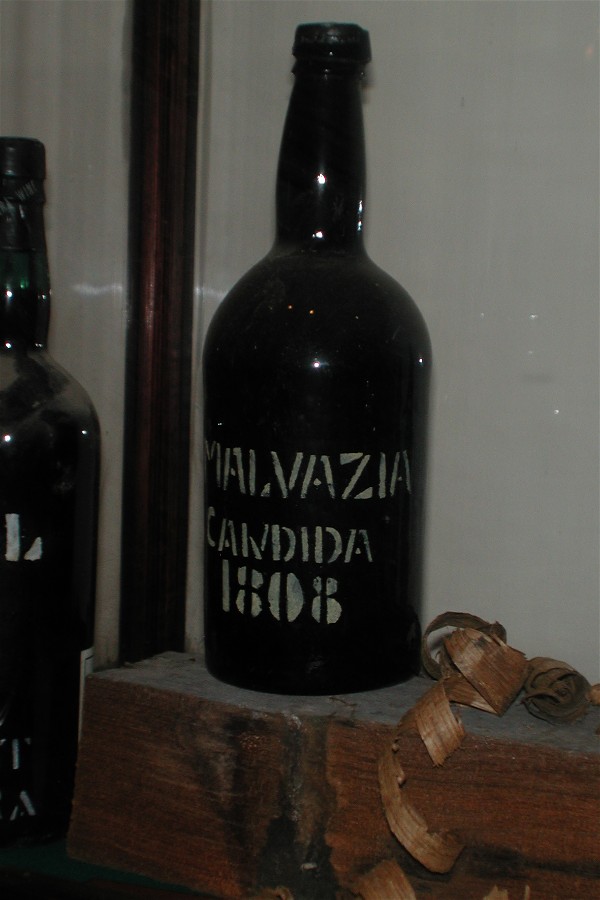
Fat free blown bottle in the MWC museum.
The color of the typical Madeira wine bottle is often a dark green, but there is almost any color possible, you can even find a few clear glass bottles. All in all this variety shows, that bottling Madeira wine obviously was a day to day business and it also reflects the sometimes poor and hard conditions of wine making.
HISTORY OF BOTTLE MAKING
Free-blown bottles
Until the 19th century the method of blowing a piece of molten glass with a pipe and some other simple devices into the shape of a bottle was the only way to produce wine bottles. There was of course the method of casting, where you simply heated the glass to a higher temperature and then let the liquid glass run into a mold where it cooled down. But the molds where rather roughly shaped and the extra amount of heating material needed to liquefy the glass made the method of casting unsuitable for the production of higher numbers of any containers made of glass. You could also blow the molten glass into an outer mold, so that the shape was assumed quickly and the variations between two containers became smaller. In the end of the 19th century then, the method of pressing was developed to perfection and the industrial production of bottles began.
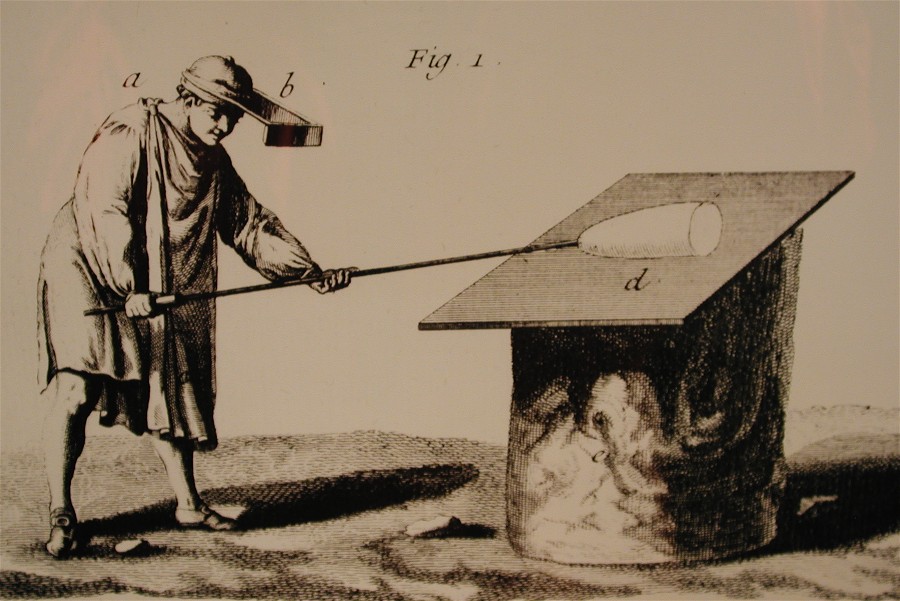
Rotating a piece of molten glass to force it into a cylindrical shape.
Because of the method, the size and shape of free-blown bottles vary greatly. Since the process of blowing includes rotating the piece of molten glass, you can often (not always) recognize some circular patterns in the glass that result from the rotation. Tiny bubbles within the glass can also be a sign of a handmade bottle. The strength of the bottle wall may vary from top to bottom, visible by small variations of transparency of the colored glass. Also hand blown bottles tend to have a relatively long neck when compared to molded or machine made bottles. Sometimes you will find a sign on the bottle, but normally the bottle is void of any markings.
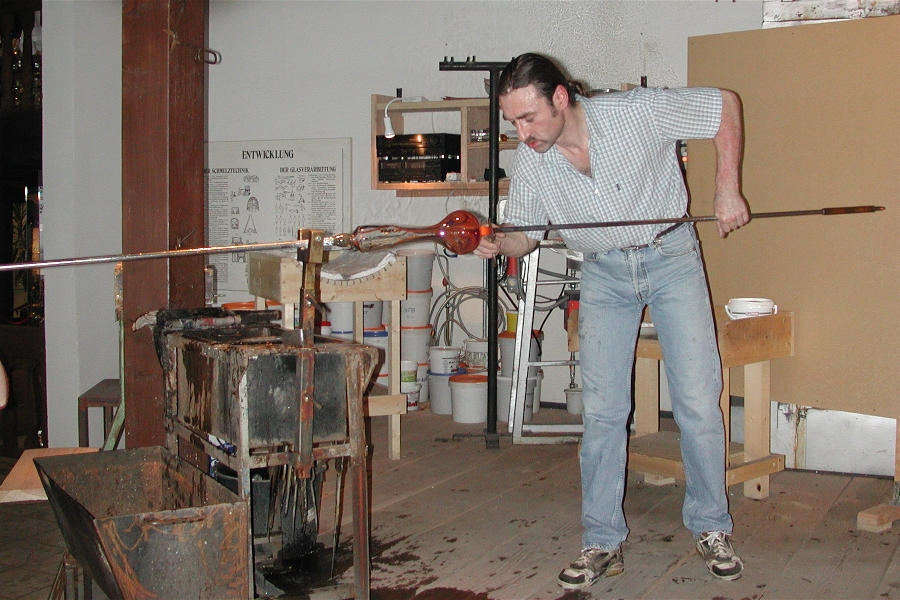
Attaching the punty rod to the base of the glass container.
Pre-Industrial Manufactured Bottles
As said above, you could blow the molten glass into a mold, thereby shaping the outside of the glass container. This was done manually at first, later there where automated blowing machines that used molds and the blowing technique to make bottles. The molds where usually made of three parts, sometimes even four parts. The bottles are easy to recognize from the rather rough seams where the parts of the mold got together.
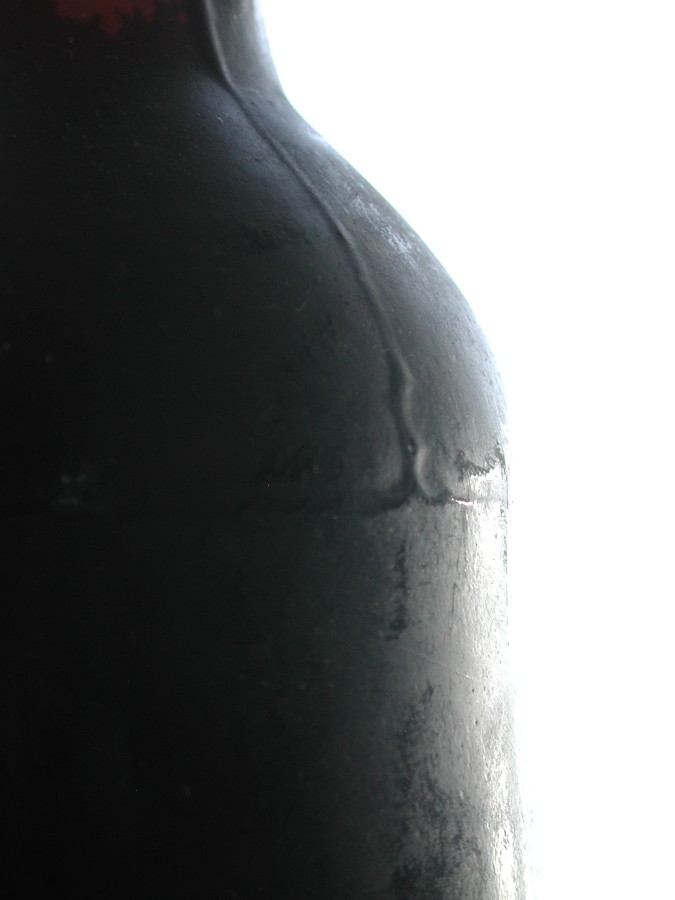
Three part molded bottle.
If you take a close look, you might also find signs of tension in the glass of the bottle neck, like stripes or long bubbles in the glass, following the direction of the bottle neck. This resulted from the hot glass being retracted a little from the mold to form the bottle neck and the opening. Most of these bottles also had a pontil mark since they still had to be held at the bottom while the lip was formed manually or with a lipping tool.
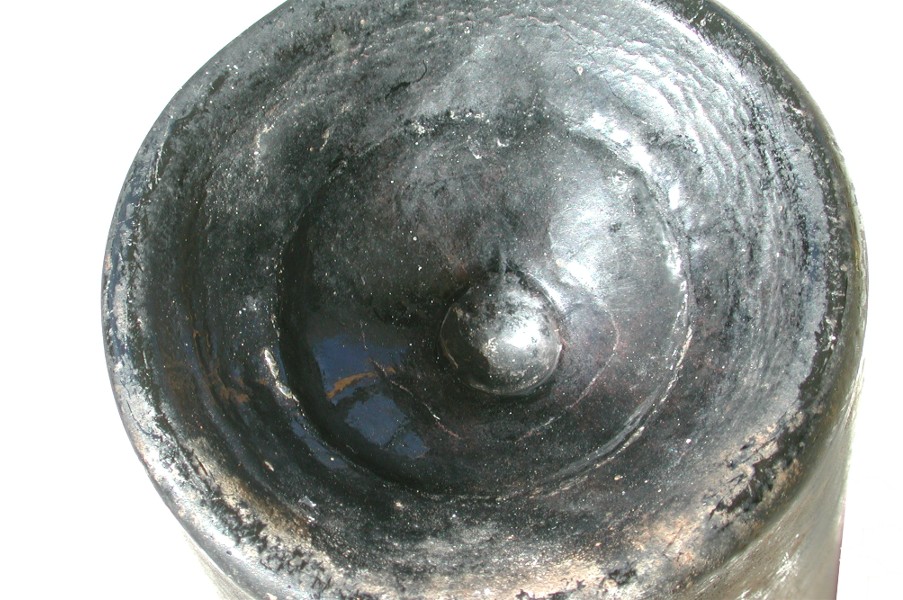
Ground pontil mark.
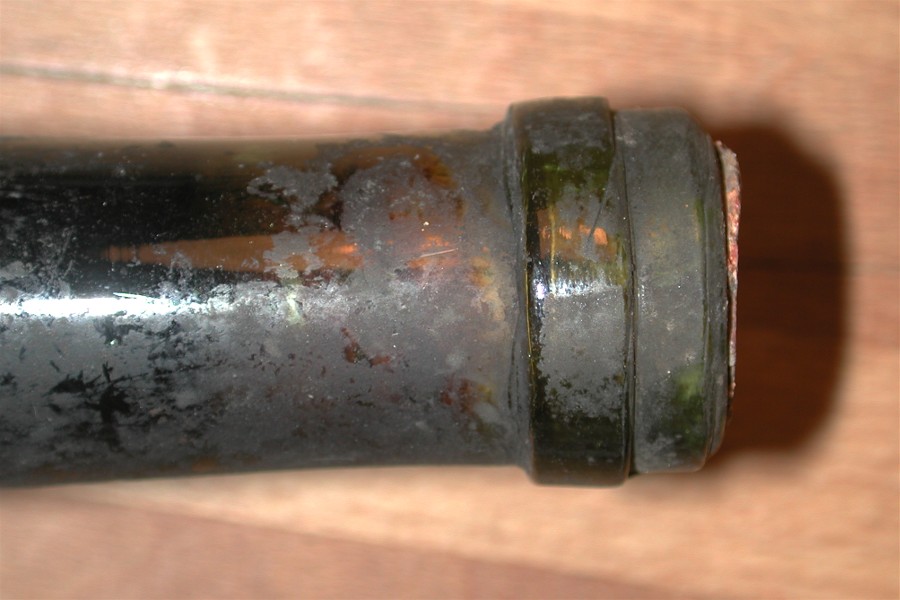
Tooled lip of a molded bottle.
Bottles Of Industrial Make
After the method of pressing had been perfected, bottles where made by pressing a piece of molten glass into an iron mold with the help of a plunger. This still left the problem of the bottom and neck, but very soon that was solved by a combination of the pressing method with the blowing method. Todays bottles are produced by blowing machines in large quantities from all kinds of glass mixtures. The main ingredients are silica and carbonates as well as different colorings and stabilizers. It is only in the 20th century that bottles bear letters and numbers that specify anything from the volume to the producer and the EU sign. Machine made bottles also often have some indents so that they can be easier rotated by the machines. Dots or lines on the bottom are readable for scanners in the factory.
I have seen some 20th century bottles bearing the producers initials or seal in the glass. Whether this is also found in pre-industrial bottles I can not tell, since I have never seen any seals on this type of bottle. However the number of dropouts from the hand blowing method or the semi-automated blowing method was already high enough, so I imagine that the producers did not want to risk any more bottles with fancy decoration procedures.
THE DATING OF OLD BOTTLES
To date an old bottle you have to look at three details:
- Side seams
- Lip (often difficult to see through the sealing wax or foil cover)
- Bottom
Looking at these details it is possible in most cases to date your bottle to a certain period of time. Changes in bottle manufacturing took place over years, so at certain periods of time there were different bottle types in use. As a result of these overlapping periods all time-spans given are approximate. This is just a simplified guide to the dating of antique bottles. If you want to get into detail please take a look at one of the websites that can be found in the bibliography section.
Different Bottle Types in Chronological Order
Free blown bottle (before 1860)
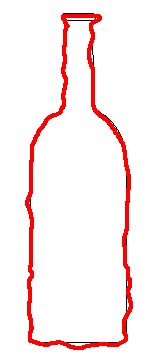
Uneven shape
No seams, maybe circular patterns
Pontil mark at base. The open pontil mark resulted from the punty rod used to hold the bottle during the making of the lip. Sometimes this rough area had been polished or heated again. This is called a ground pontil. Later iron pontils were used, leaving a brown or red iron residue at the base. (open pontil before 1860, iron pontil 1850 – 1870)
3 part mold (1830 – 1870)
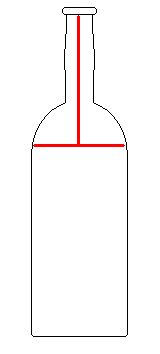
Even shape
Circular seam at the shoulder, two seems going up the bottle neck
Crudely applied lip or tooled lip
Pontil mark at base (open pontil before 1860, iron pontil 1850 – 1870) or molded smooth base
Blown in mold with applied lip (before 1870)
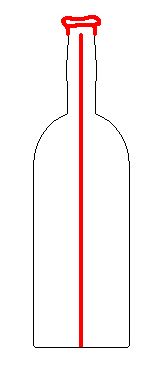
Even shape
two side seams
(Crudely) applied lip
Pontil mark at base (open pontil before 1860, iron pontil 1850 – 1870) or molded smooth base from 1870 on
Blown in mold with tooled lip (1880 – 1910)
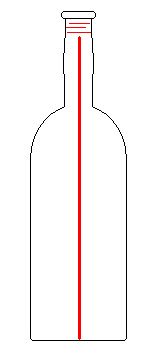
Even shape
two side seams
tooled lip with concentric ring pattern below (caused by the rotated lipping tool)
smooth base with or without seams (diagonal or circular)
Blown in mold and rotated (1900 – 1920)
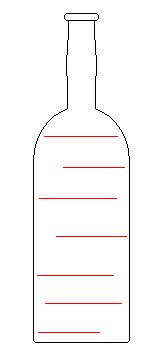
Even shape
No side seams, maybe small circular patterns around the bottle from the rotating of the bottle in the mold
Tooled lip
Smooth base with or without seems (diagonal or circular)
Machine made bottle (from 1900 on)
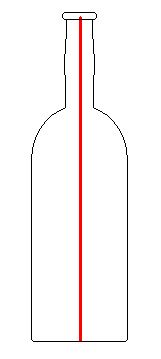
Even shape
Two side seems running through the top of the lip
From 1920 almost every bottle was made by an automated bottle machine
Machine made bottles always have smooth bases
Early machine made bottles feature a circular mark on the base: the Owens ring.
THE LABELING
Stencils
Most of the Madeira bottles bear a few white letters. These are seldom painted by hand; usually they are applied with the help of a stencil. I have only seen one bottle where they had used a reddish brown as the stenciling color, but for a number of reasons this bottle was almost certain a fake. In the following pictures you can see Edmundo Olim of ABSL stenciling a bottle.
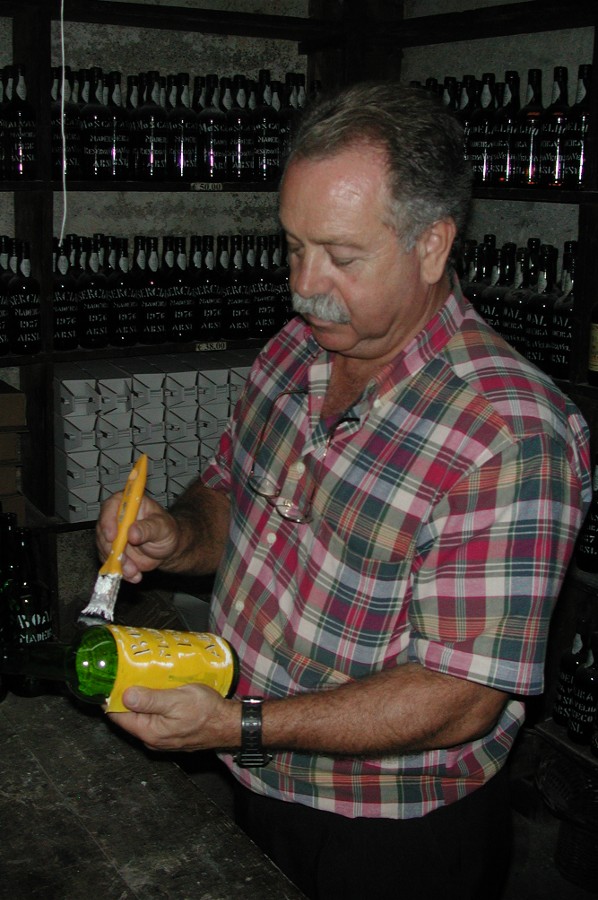
Edmundo Olim of ABSL paints the bottle with the help of a stencil.
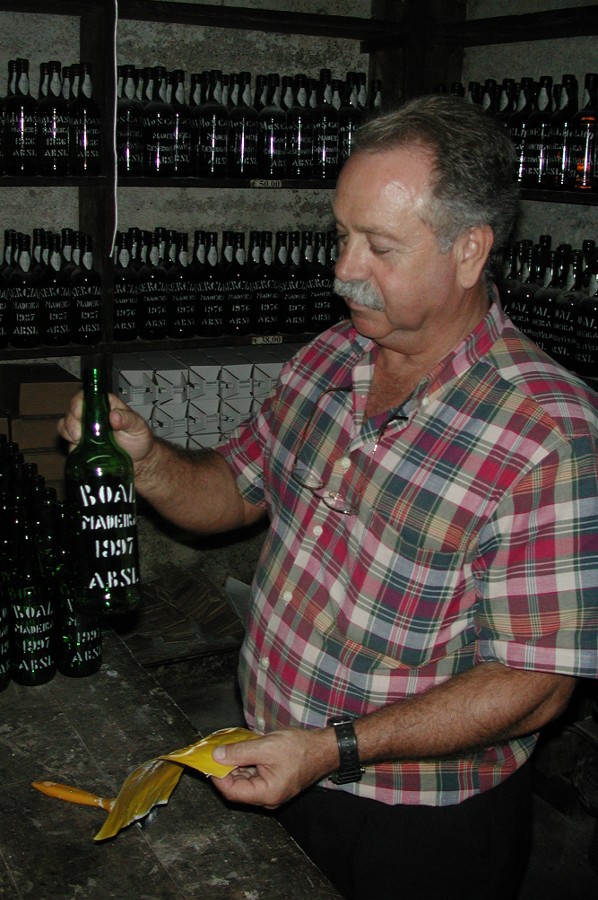
The stencil is removed and the bottle is finished.
The labeling of bottles containing vintage Madeira wines differs from that of other wines. While even the blends carry the usual paper-made label, there is none on the vintage bottles, except maybe a very small one on the back, indicating the alcohol content and so on. The front side of the bottle carries a few letters, painted directly on the dark glass. This used to be done by hand, but is nowadays made with stencils, or the bottles come pre-printed from the factory. The black-and-white contrast gives the vintage Madeira wines a unique feature, a little minimalist perhaps, but very appealing. With some old vintages though, the lettering can be so short, that it will be difficult to find out, what the contents of the bottle exactly are. Sometimes a date of year and the initials of the producer will be all there is, maybe a letter for the grape variety too. The letters "B 1936 HMB" as an example will indicate a 1936 Boal vintage produced by H. M. Borges.
There are a few vintages with paper labels too. Usually these were bottled in the country of destination. So the label sometimes even came in the consumer’s language. The problem with these paper labels however is, that they are nowadays often in poor condition. It can be pretty hard to tell what the label says.
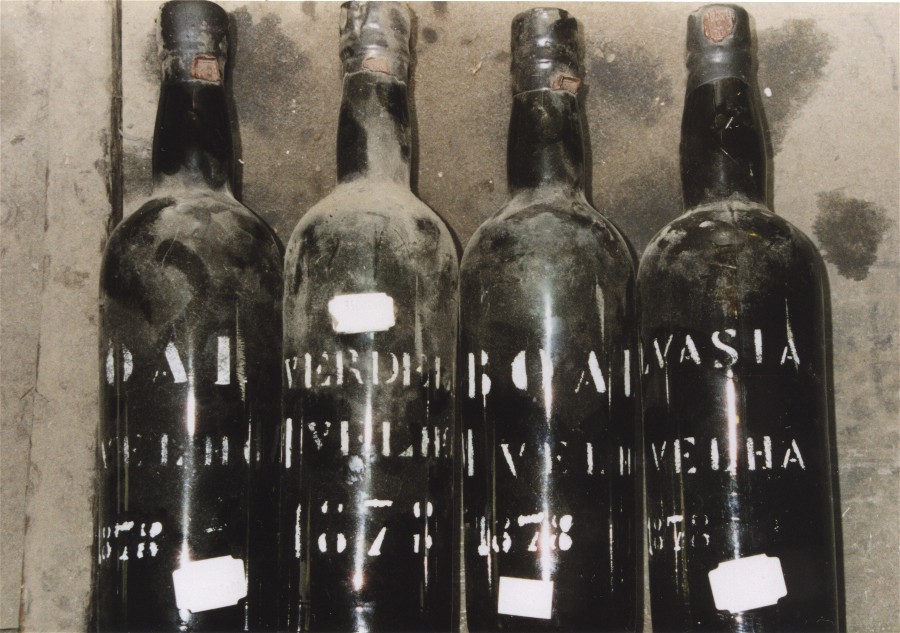
Old vintage bottles with the typical stencils, seen at the Casa do Turista.
Paper Labels
As said above, vintages that were bottled in their country of destination will sometimes carry a paper-made label instead of being stenciled. Also some modern day vintages, mostly for the US market, carry a front paper label but the back is also stenciled. This might give the consumer more information, but in means of style I think it an incongruity. Also on some bottles the year of the vintage is supplied on an extra label. This was probably for economic reasons, since the producer could use the same basic label on all his different vintages and only had to change the printing for the small vintage label. Another way of economic use of paper labels was to have the labels printed with a free space for the vintage year and/or grape variety. This information would then be stamped onto the label when the wine was being bottled. The gluing of the labels is remarkably enduring in most cases. If you store your bottles in a very humid cellar though, the labels might come off. I have tried different types of spray glue, clear varnish and other things like plastic wrapping. Wrapping the entire bottle in a clean transparent plastic bag (the kind used for freezing food) seems good to me. The best thing still is to store your Madeira wine bottles in a cool and not to humid place, upright of course.
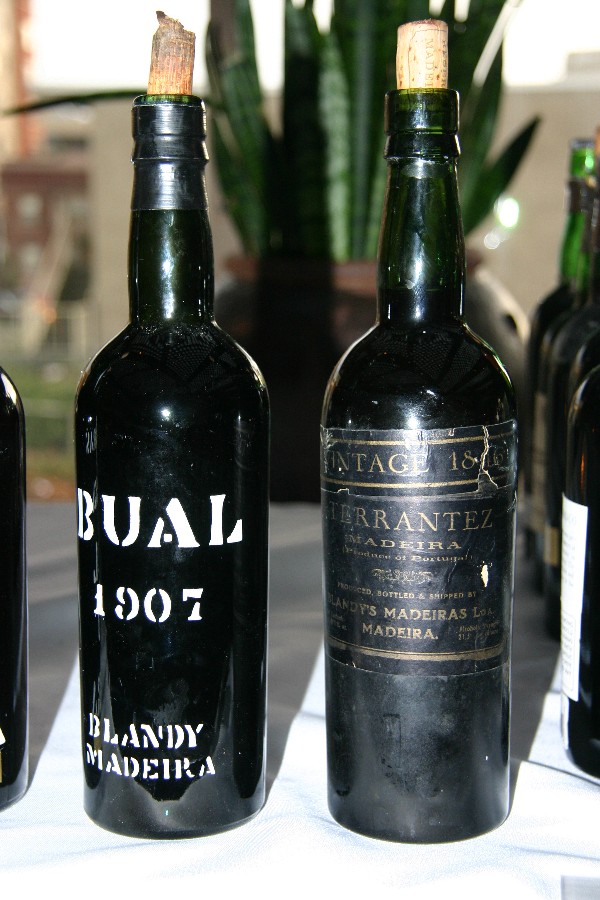
The two different ways of labeling Madeira wine side by side.
Back Labels
Especially in the U.S. but also in other countries, vintages and soleras will often carry a back label. This is where the importer, the shipper, the alcohol content and other data like the U.S. health warning is given. Also the back label sometimes offers information about the origin of the wine and the date it was bottled or rebottled.
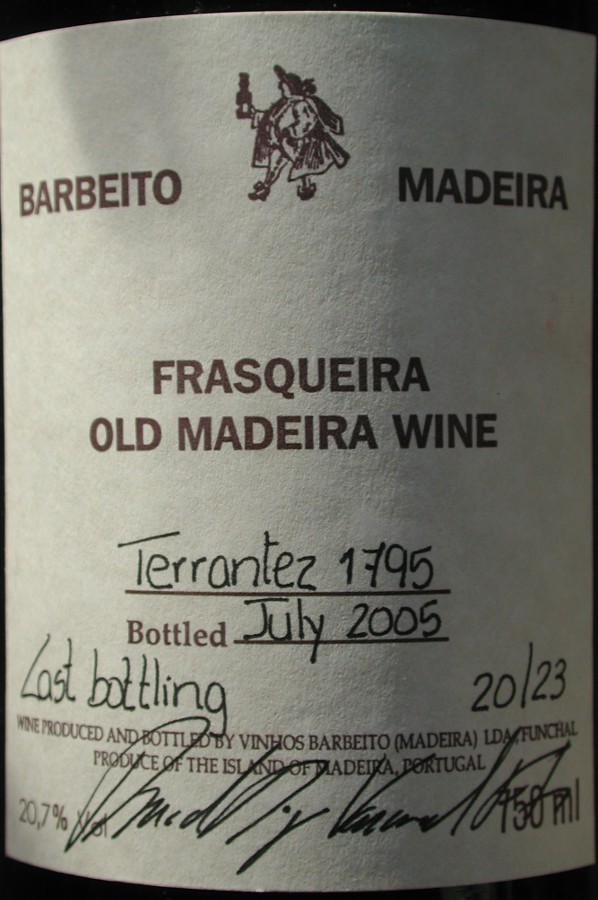
Back label of the famous Barbeito 1795 Terrantez last bottling.
Additional Papers
Sometimes you will find a small paper tag hanging from a cord around the bottle neck or being sealed to the top of the bottle. This tag supplies additional information about the producer like the exact address. Also sometimes you will get your bottle together with a proof of authenticity, usually some very grandiose and colorful piece of paper. The MWC as an example gives the buyer of old vintage wines a sealed document that guarantees the age and origin of the wine.
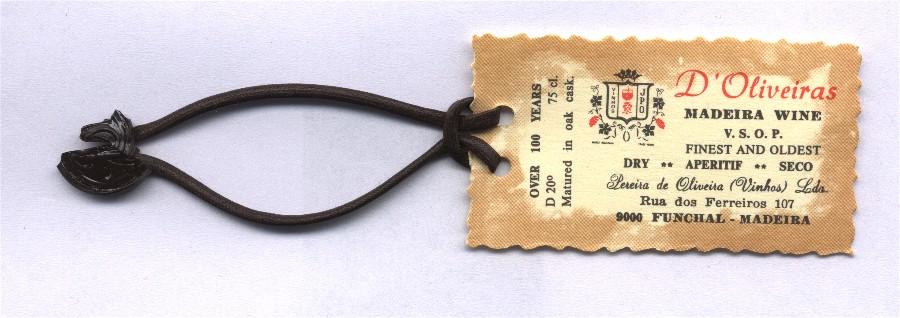
Paper tag of D'Oliveiras.
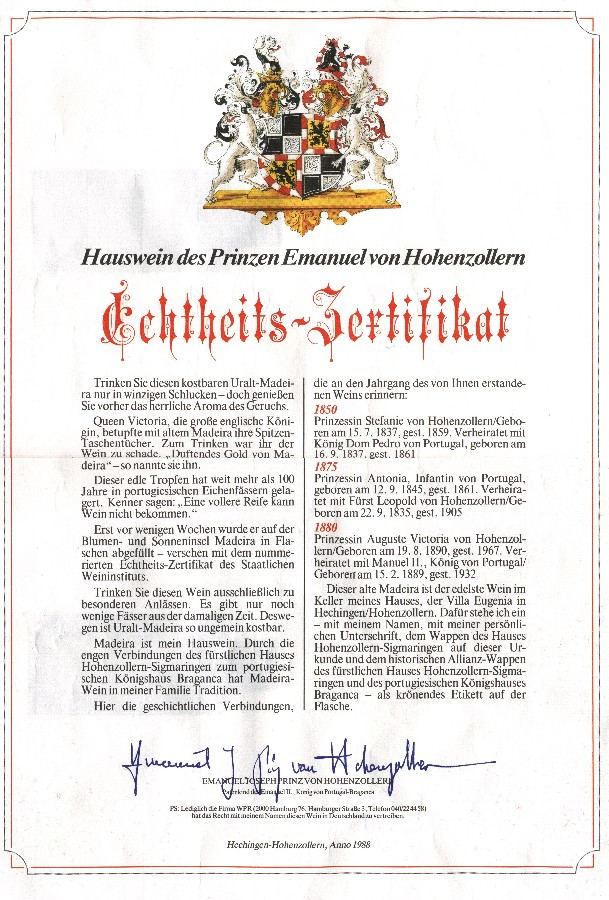
Echtheitszertifikat=Proof of authenticity.
Revenue Stamp
Revenue stamps are sometimes glued on top of the paper label or on the bottle neck.
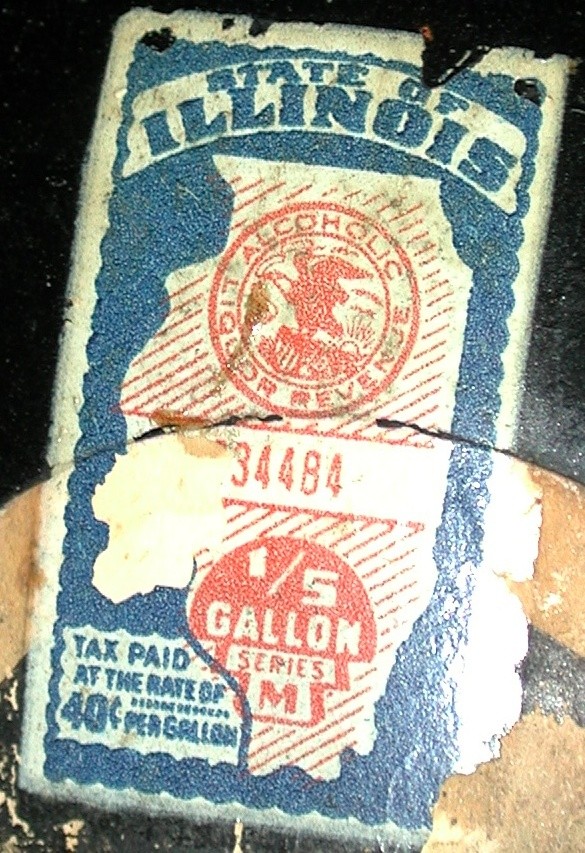
Revenue stamp.
ABOUT BOTTLE NAMES
Usually the bottle bears the grape name. Especially in the U. S. however, it was custom to give some special Madeira wine an extra name. This name could have any meaning. It was common to name the wine after the ship that brought it over from Madeira, or that had the wine on board on the round trip before the invention of the estufagem process (see: making of). But the wines would also be named after wives (or lovers), the birth of the long awaited son, a winning horse at the races or even the color of the cask that the wine was kept in. In some names it is impossible to find out the meaning nowadays. I have once had a discussion about a Madeira wine called “hurricane”. After some research the origin of the name could be found. The wine had been shipped to the U.S. aboard the South Carolina based ship “Hurricane” owned by the Blake family in the 19th century. In fact “Hurricane Madeira” was quite famous. William Neyle Habersham, who was probably the Madeira wine authority of his days in the second half of the 1900th century, had some “Hurricane Madeira” in his huge collection.
Before it became common to name the grape variety on the bottle, the wines were also often just named after the district in which the grapes had been grown. Names like this could be “Camara de Lobos” (or “Cama de Lobos”), “Campanario”, “Sao Martinho” and so on.
Especially with the reduced availability of grapes after the Phylloxera, it often happened that the wines were just labeled as “fine” or “genuine”. This usually indicates that the wine is a mixture of grape varieties.
CORK, CAP AND COVER
The cork
The cork can be astonishingly short. Sometimes the only thing that keeps the wine from running out is the wax cover. So-called stopper corks were obviously very common. If the cork is not covered by wax, foil or a wicker cap you should take a good look at it. Any visible damage of the cork and especially any visible remains of insects or maggots should keep you from buying the wine. Again: Madeira wine should be kept in an upright position. The often rather cheap corks are just another good reason to do so. Branded Madeira corks are very rare, I have only seen a few examples.
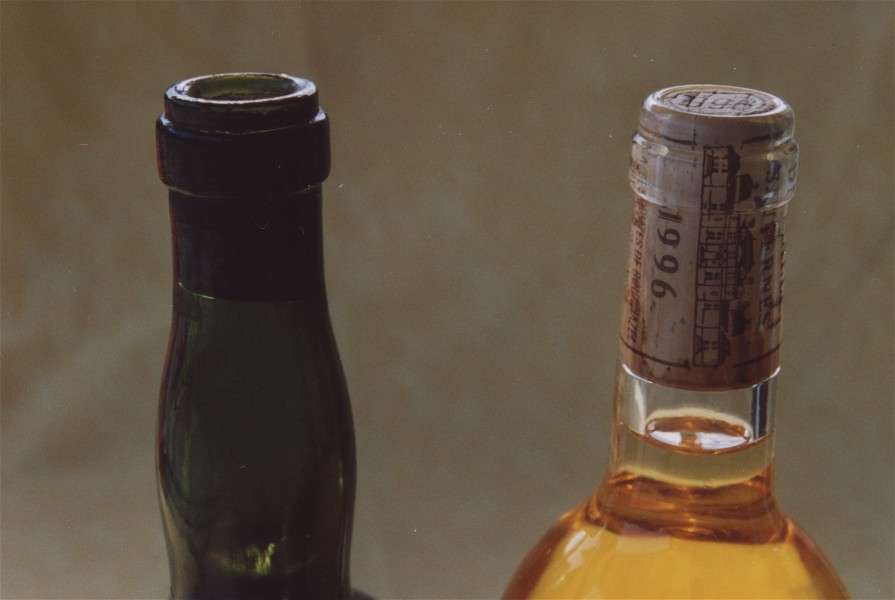
Comparison of the usual short Madeira cork (left) to a Sauternes cork.
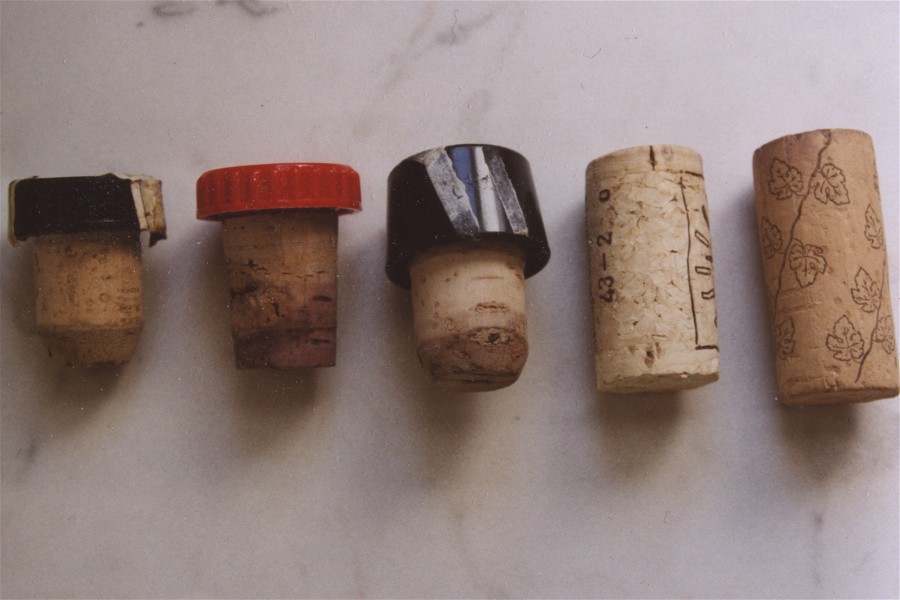
Stopper corks compared to normal corks.
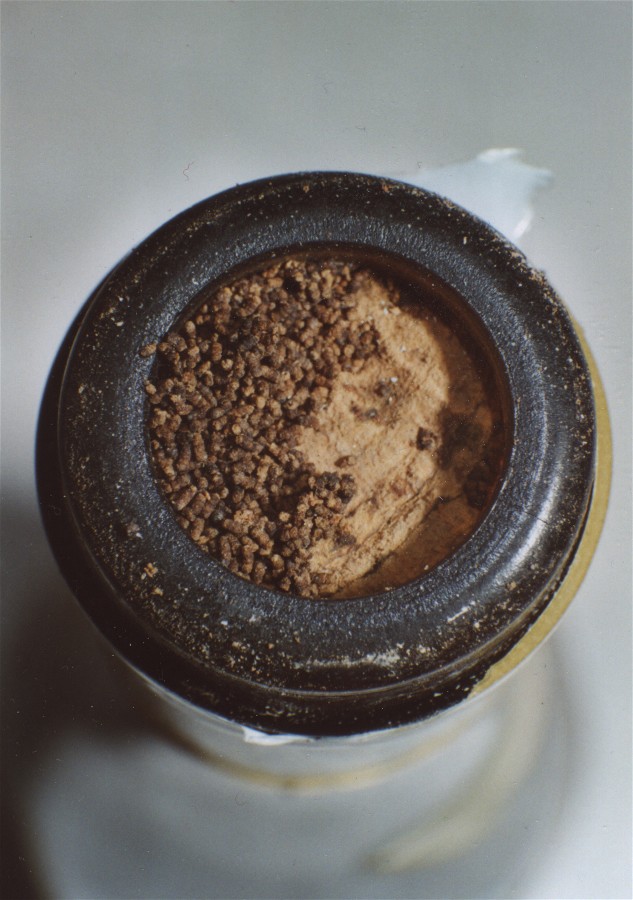
Remains of cork maggots.
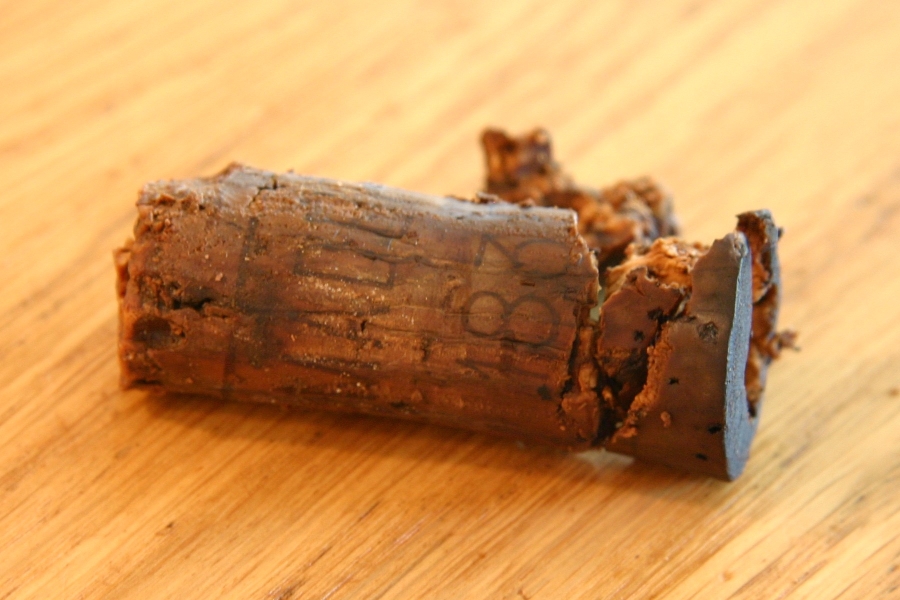
Example of a branded cork from a 1835 Brown Madeira Imperiale bottled by Nicolas, Paris.
The Wicker Cap
Some bottles carry a small wicker cap over the cork. Under the wicker cap the cork is usually wrapped in a little piece of paper and also often covered with wax. The use of wicker caps stopped in the 1980ies apart from some cheap 3YO and 5YO still being sold in wicker.
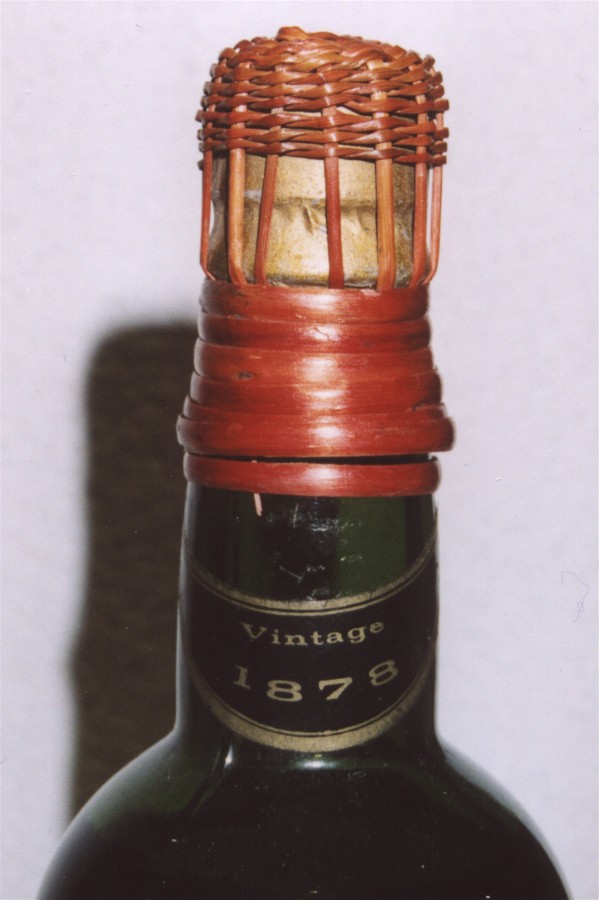
Wicker cap of an 1878 Madeira wine.
The Wax Cover
The corks are usually covered with sealing wax. Often the shipper or producer has imposed the company's seal on the wax cover. Make sure that the wax cover is not broken. If it is, there is a higher risk of evaporation from the bottle, so if you do intend to keep the bottle, either have it re-corked or at least close the cracks with some drops of wax from a non-perfumed candle.
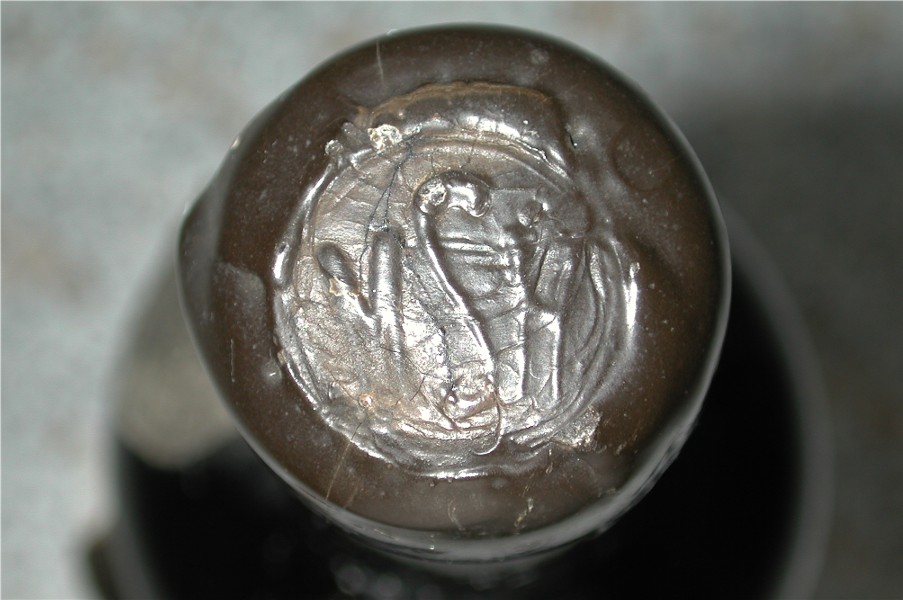
Shipper's wax seal of Manuel de Sousa Herdeiros Lda.
THE LEVEL OF WINE IN THE BOTTLE
Most of the times you will be able to see the level of wine inside the bottle. If the bottle is to dark to get a good look, be it because of the dark glass or of deposits on the glass try to hold a flashlight behind the bottle. The level of wine is important because it can give you information about the time span the wine spent in the bottle and will also allow you to assess the risk of buying a wine gone bad. The space between the lower end of the cork and the level of wine is called ullage. The greater the ullage the more oxygen is inside the bottle. Even Madeira wine can become dried out and the risk is higher for old bottles with a great ullage. Often you can not see the lower end of the cork due to the wax cover so you have to estimate the ullage. You can also compare the level of wine with the shoulder of the bottle (most Madeira wine bottles have one; this does not work with burgundy shaped bottles of course). The following description was first invented by Christie’s Michael Broadbent and is commonly used today.
Into neck: this means the level of wine is still in the bottle neck, no need to recork the wine, very low risk.
High shoulder or top shoulder: the level of wine has reached the upper curve of the shoulder, no need to recork the wine, still no risk, if the bottle was kept under normal conditions you would expect a bottle age of about 15 to 25 years.
Mid shoulder: the level of wine has reached the middle of the shoulder; you should have your bottle recorked. There is some risk that the wine has gone bad, the age of the bottle should be about 20 to 40 years.
Low shoulder: the wine has reached the lower end of the shoulder; the bottle needs to be recorked. There is a serious risk of buying a bad wine. The estimated bottle age is more then 30 years if the bottle was stored under normal conditions.
Below shoulder: the level of wine is below the shoulder, the bottle needs to be recorked. There is a high risk that the wine has gone bad.
If you should decide to have a bottle recorked it is important to bring the level of wine back to normal to reduce the amount of oxygen inside the bottle. This is done by putting small sterile glass balls into the bottle. Also you should take a small sample from the wine to estimate its ability for further storing. Even though Madeira wine seems virtually indestructible it can dry out after a long time. Should you decide to do the recorking yourself you will find all the information needed in the chapter about the recorking of old bottles.
OTHER SEALS AND SIGNS ON THE BOTTLE
Markings in the glass
Some bottles that were produced especially for the shipper bear on the glass the initials of the filling company or the year of the foundation or some other sign of the shipper. Also the name of the producing company is sometimes written on the bottle as a relief. The old bottles of Henriques & Henriques are an example for that.
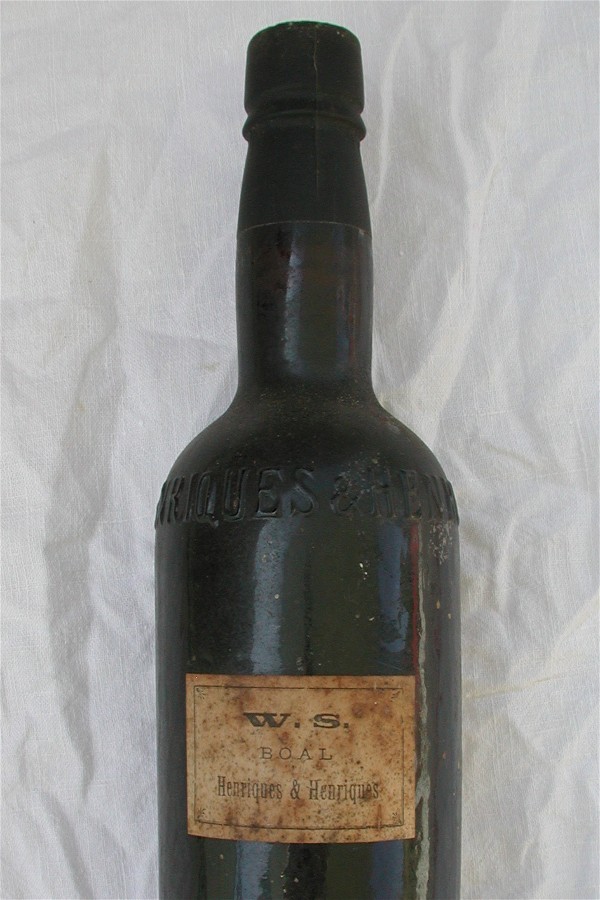
Old Henriques & Henriques bottles with the company name on it.
Paper Seals of the JNV or the IVM
The Junta Nacional do Vinho and since the 1980ies the Instituto do Vinho da Madeira issue a paper seal that is glued across the cork to ensure some minimal standard of quality and authenticity. Please refer to the chapter "Producers, Shippers & Co" for details.
The JNV Wax Seal
Some wines bear a small brown seal with the letters JNV and REF in a rectangular frame. This seal was issued in the beginning of the 1960ies by the Junta Nacional do Vinho da Madeira, if they saw an old vintage as authentic. This seal does not offer a hundred percent certainty, but is reason for some trust and probably a higher price. The seal is usually applied on the bottle top or an the neck partially covering the foil cap and the glass, thus preventing any attempts of tampering with the bottles contents. There are also two much rarer versions of the JNV seal. Both seals have a round shape and the diameter is about 1 inch or 2,5 centimeters. So far I have only seen fragments of the first round version, but with some help I was able to reconstruct it. The reconstruction is shown below. The second round version is of the same size, but features only the JNV coat of arms with a number below. The wax used comes in different colors, brown, black and even a reddish brown is used.
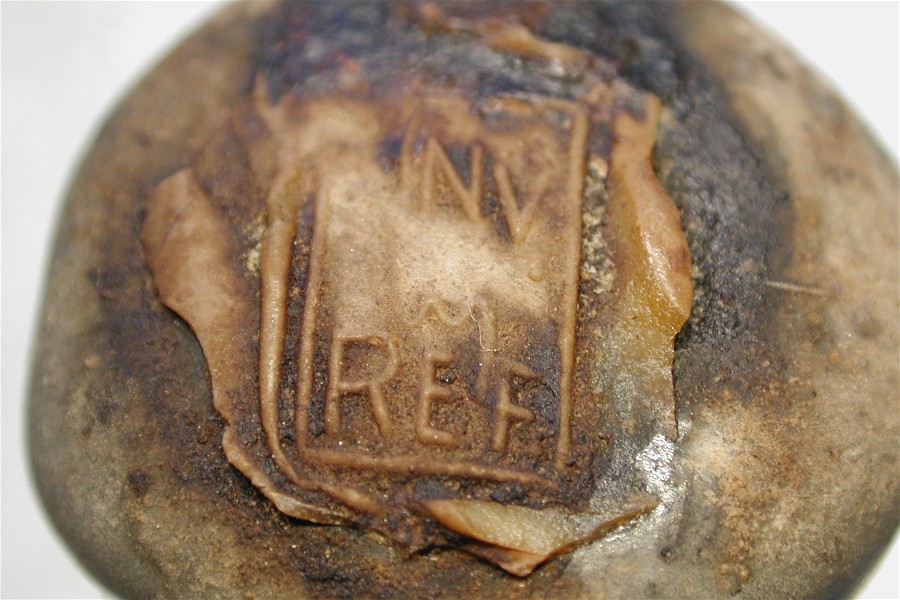
JNV-REF seal.
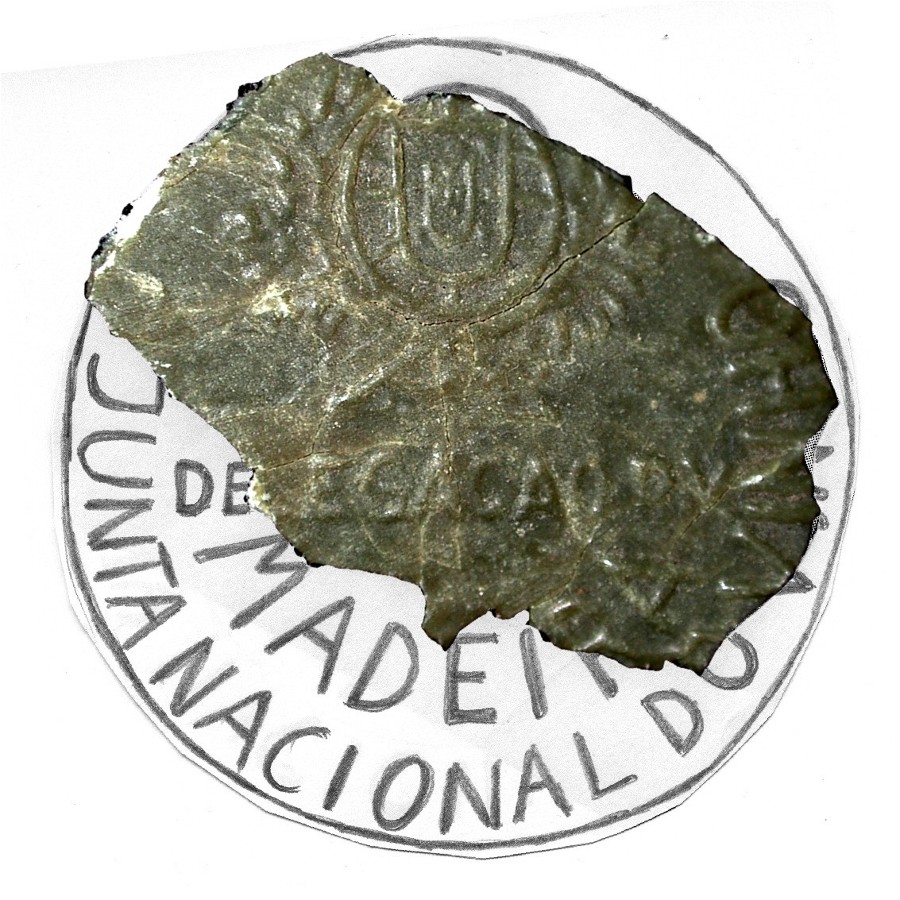
Alternative JNV seal, first version.
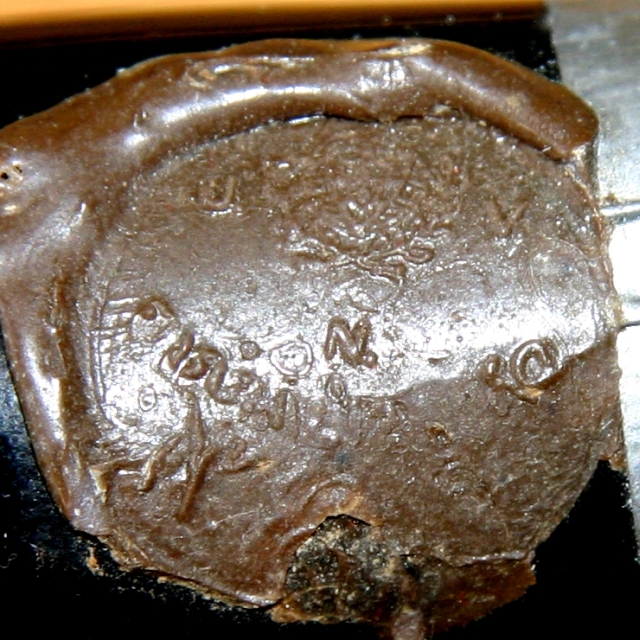
Alternative JNV seal, second version.
The Kassab Seal
Braheem (sometimes written Brahim) A. Kassab was a Syrian embroidery merchant who collected Madeira wines early in the 20th century. His personal seal “BAK” was put on all his bottles. The remains of the collection were auctioned off by Christie’s in 1986. The Kassab seal is put on top of the cork, filling the whole diameter of the top.
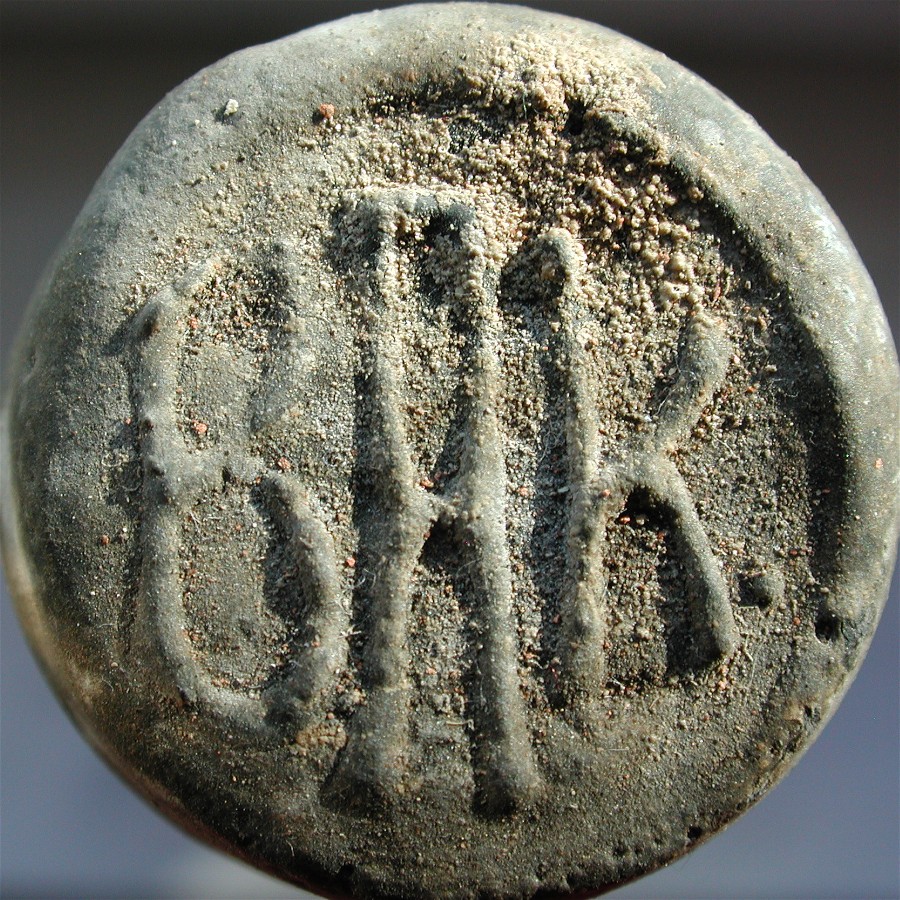
Kassab seal BAK.
SEDIMENTS AND CRUSTING
In an old vintage or solera there are always some sediments and crusting. They do not affect the taste of the wine, but a bottle can become so crusted, that you can not see through it. After transport, the sediments are stirred up, so you should allow them to settle for a day before you open the bottle. Better than decanting is filtering the wine. Please refer to the chapter on how to serve Madeira wine for more details. The crusting that covers the glass from the inside can give you information about how the bottle was stored. The following picture shows a bottle that had been stored in an upright position. Note how the crusting starts at the former level of wine in the bottle neck.
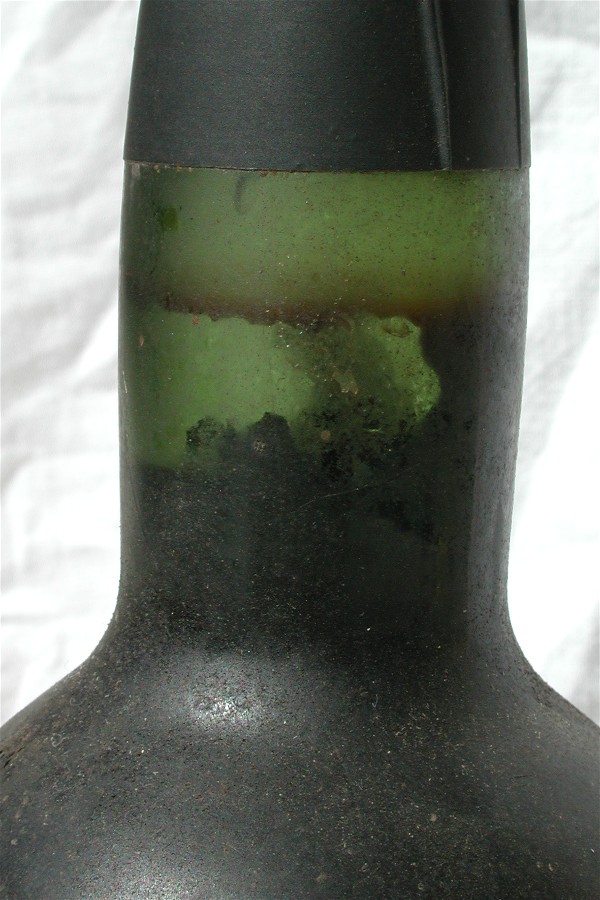
Crusting in the bottle neck.
THE SELLER
The most important clue to the authenticity of an old bottle is the seller. A serious seller is likely to sell a serious bottle - this sounds too obvious to be mentioned, but it is an important fact that many people seem to forget, when they see an offer to good to resist. In my experience the producers on the island of Madeira are absolutely trustworthy when it comes to old bottles. This is also true for the well established shops like Diogo´s, Garrafeira, Loja dos Vinhos or others.
Private island sources are of a higher risk of course, but I would still tend to rate them as rather serious. Bottles can sometimes be rather cheap, but since there is usually no proof or documentation of the old bottles, this is the bonus for the risk-taker. Bottles from private sources are sometimes in a really bad shape, so check them first. Look for a wax cover over the cork, check the bottle for cracks and anything unusual. After all, the bottle still has to make it through the flight back home.
The same is to be said about well-established wine shops with a good reputation. The risk here lies more in the fact that they had to get the bottle from somebody else in the first place. So my advice would be to ask the seller about the origins of the bottle, if he dealt with this source before, what experience he had with the source and so on.
Another reliable source for old bottles are auctions by the well established auction companies. They usually check the reliability of the source themselves and are able to give you an expert's opinion about the bottle (Christie’s Michael Broadbent is the best example - read his wine notes, there are some very interesting Madeira wines among them!). Internet auctions are something completely different. The bottles are often auctioned off by private sellers, so there are no guarantees whatsoever. You can't even really see the bottle before buying it; often a tiny, hazy, low resolution picture is all you can get. I have seen bottles that where obviously faked being sold on the Internet. Also be aware that buying alcohol via the Internet is not legal in some countries as is shipping of alcoholic beverages!

You must be logged in to post a comment.